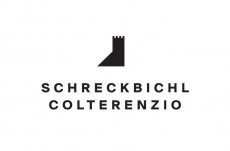Region: Trentino-Alto Adige/Sudtirol

In 1960, 26 winegrowers from Colterenzio in Appiano founded their own cooperative in order to gain their independence from the wine merchants of the time. These rebels named the newly-founded cooperative after their homeland, the small hamlet of Schreckbichl, (Colterenzio in Italian). In their constant pursuit of top quality, the Colterenzio winemakers were also pioneers. The initial founder was Luis Raifer, who took over the management of the young cooperative in 1979. When he returned to South Tyrol from a study trip in California, he had big plans in mind. It was in the 1980s, South Tyrol was primarily a red-wine region, and the quality was run-of-the-mill. Raifer, a winegrower himself, recognised the potential of South Tyrol as an outstanding winegrowing region: The terroir was cheap, sufficient vineyard area was available and the winegrowers were hard-working and skilled. His first step in his vineyard, “Lafóa”, a sunny mountain slope behind the Colterenzio cellar, was to replace the Vernatsch vines with Cabernet Sauvignon grapes,
and, later, Sauvignon Blanc. He also brought in new quality standards: Lower yield for higher-quality grapes and higher-quality wines. It was on this pilot vineyard slope that, with both Cabernet Sauvignon and Sauvignon, the new quality standard measures were introduced.
This quality philosophy extended its reach to all members of the cooperative: new grape varietals were experimented with, and quality groups created. Today, the members and workers at the cellar are committed to working in line with this model throughout the entire winegrowing area, the cellars and for all wines.
The 300 partner winegrowers of the Colterenzio winary are the backbone of the company. They work year-round on their wine hills with their families in order to supply us with top-quality wine grapes in autumn.
THE STORY OF “LAFÓA”
Lafóa – four wines of Colterenzio bear this name. But where does this name come from and what does its label represent? We explain you the story of this special brand.
It was in the 1980’s, when Luis Raifer, winegrower and, at this time, director and president of Colterenzio Winery, came back from a study trip in California with many, new ideas. He recognized the big enormous potential of Alto Adige to produce high quality wines. The terroir was favorable, enough vineyards surface was available, and the winegrowers were hard-working people. At first, he replaced the Schiava (Vernatsch) vines with Cabernet Sauvignon-vines in his vineyard “Lafòa”, located on the top of Cornaiano hill, in a ventilated venue, blessed by the sun, not far from Colterenzio’s headquarter. Secondly, a few years later, he also planted Sauvignon blanc.
At the same time, he started to fight for new quality standards being recognized in Alto Adige: less production per hectare, healthy and high-quality, -concentrated grapes for a great value wine. So, the line “Lafóa” was born and the Cabernet Sauvignon was the first wine to be released, in 1989, at that time with a different label. The first Sauvignon Lafóa was introduced with vintage 1993. Recently, two other wines joined the prestigious Lafóa-family: with vintage 2015 we introduced also Gewürztraminer and Chardonnay, which have both achieved the quality-level necessary to be members of the Lafóa-family.
The label
All the four Lafóa-wines are dressed with a very special label. Often, by presenting our wines to international wine fairs and events, we have been asked the following questions: “What is pictured on the label? Is this Gustav Klimt?”. We will now reveal the “secret” behind this special label.
The distinctive and original Cru Lafóa label was designed by the art-design studio Guardenti of Lucca (Toscana), in early 1990s. The first label they worked on was the one for Cabernet Sauvignon, which was first released in 1993. The central part of the label depicts a real bronze sculpture-column by the painter and sculptor Guido Anton Muss (1941-2003, Val Gardena. Professor at Venice & Florence art schools; his works shown in various exhibitions in Italy and abroad), at the entrance of Luis Raifer’s farm house, representing the “spirit” of the farmstead’s guardian. It represents the natural forces which govern the growth of plants: humus and earthly forces convey in the central part of the column to open up to the sun.
The background is inspired by Art Nouveau, an artistic movement that flourished between 1890 and 1910 throughout Europe and the United States and depicts the importance of the “natural elements” for the creation of Lafoa wines. In this time, in fact, the artists were inspired by the natural forms, resembling the stems and blossoms of plants, and so was also Klimt, one of the most well-known names of this art style.